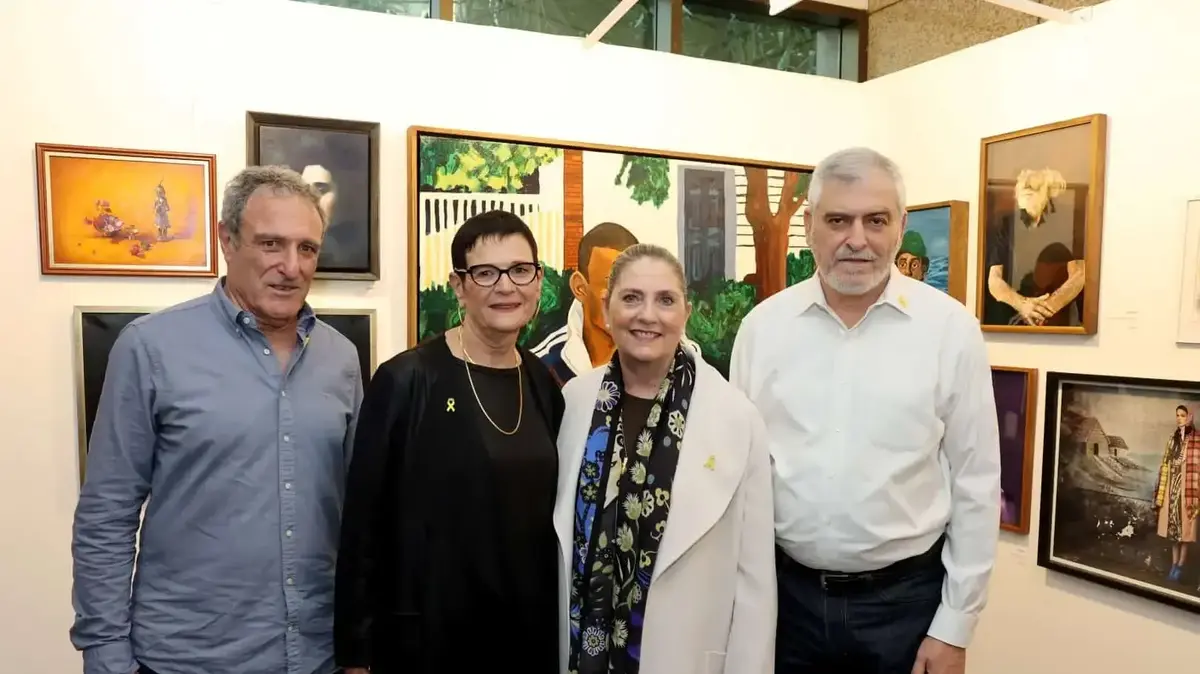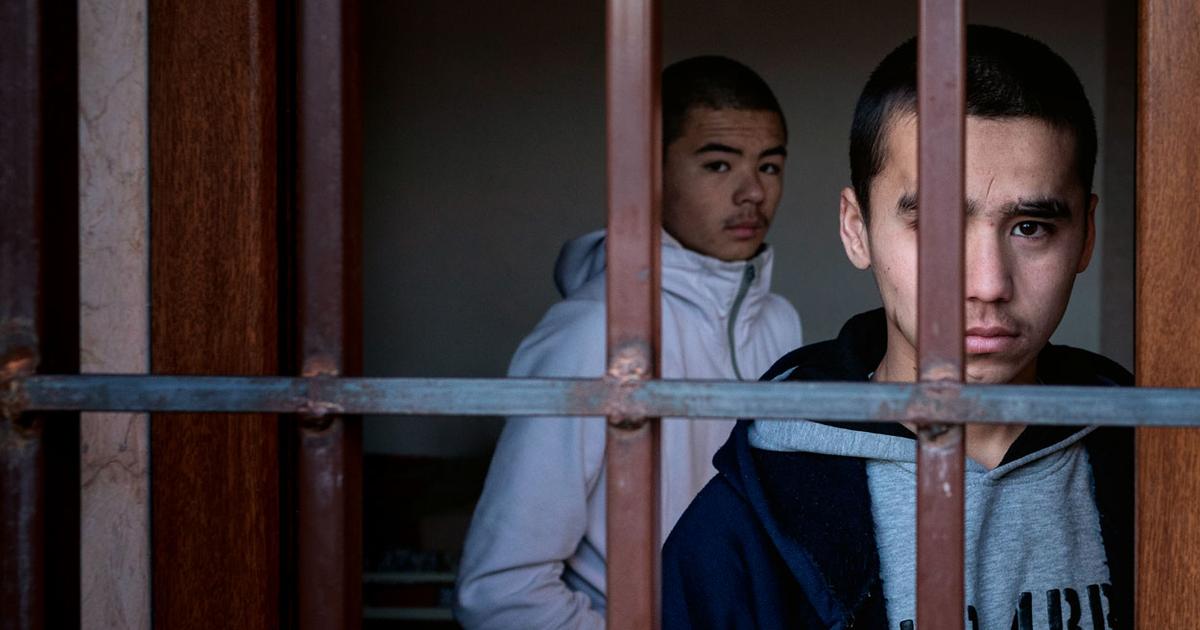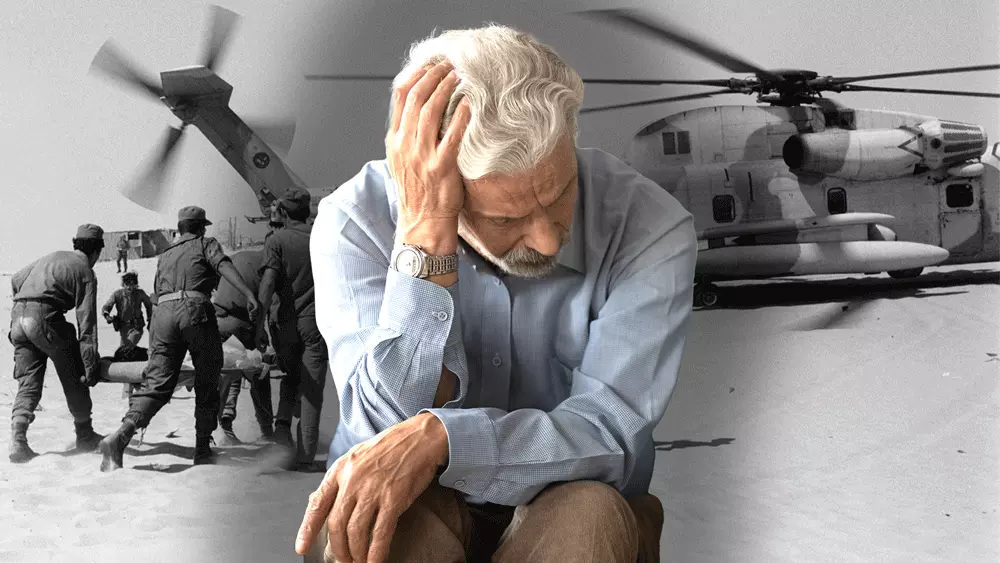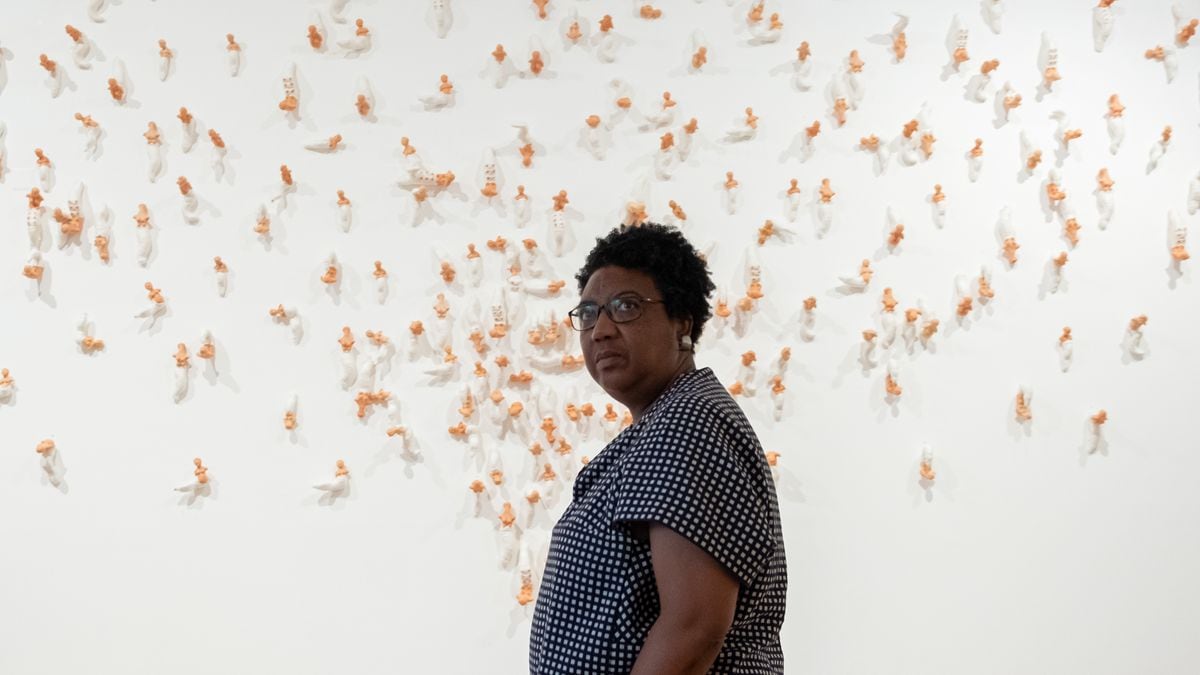They move the stairs to one side and the other of the exhibition hall while they nail up the signs of the exhibition that is about to open.
On a wall, in Arabic;
in the other, in English.
Everyone cares that the texts are perfectly aligned.
The occasion deserves it: the next day they will commemorate the 20th anniversary of the US invasion of Iraq, with a sound installation that, taking fragments of Baghdad street noise fragments, such as the prayer of the mosque or shots —in the bloodiest of times —, represents memories of the chaos that followed the 2003 occupation.
“The work that I present tomorrow comes from trying to understand what is inside me”, says the author of the exhibition, Zainab Aldehaimy (Baghdad, 1997).
Observe and participate in the preparation together with the young members of Bait Tarkib, a collective of Iraqi artists who, from the Karada neighborhood, the most popular in terms of art and leisure in Baghdad, energizes and gives outlet to the young creators of the city.
Aldehaimy is still reuniting with his country.
She left Iraq with her family in 2010, after the worst years of sectarian warfare that followed the 2003 US invasion since 2006. Having lived through the daily bomb attacks that rocked the streets of Baghdad, her family decided to leave for Iraq. Lebanon, where he lived until 2016. “You only process things when you live in peace,” he says.
That was a parenthesis to get some fresh air until, after completing a Master's in Art in the United Kingdom, she decided to give Baghdad a new opportunity, driven above all by the need to be by his family's side.
I did not want to be identified as a war artist.
Until I've realized that this is my life
Zainab Aldehaimy, Iraqi conceptual artist
“This is the first time I have exhibited my work in Iraq.
We'll see how it goes, ”she says nervously, sitting in a corner of the garden of the artistic center that hosts her sample.
Aldehaimy considers herself a conceptual artist.
“My work is political and personal at the same time due to the fact that I grew up in Iraq, since the nature of this site is political”
,
he explains, referring to the decades of conflicts that have inevitably marked the daily lives of Iraqis.
Although she has not always felt comfortable working on themes around violence.
“I didn't want to be identified as a war artist.
Until I realized that this is my life.
This type of art reflects my life.
Now I no longer fight against it.
I think that at some point I will stop doing work related to the war, ”she says.
Although she admits: "There is not a day that goes by without thinking about death."
Within the group of artists who participate in Bait Tarkib, some spend their time playing the Iraqi lute, while others help with the maintenance of the house that they use as a venue for meetings, discussions, courses and exhibitions, with all its perfectly decorated walls. .
It is here where Loay Al Hadhary (Baghdad, 1981) spends many of her afternoons, sometimes next to Aldehaimy, while she waits for her students to arrive from her sculpture classes.
Although she runs the Al Iraqia TV
channel
, she feels like an artist above all else.
Sculptor, specifically.
Loay Al Hadhary teaches sculpture to young apprentices in the creative space Bait Tarkib, in Baghdad.NÚRIA VILÀ
"Making art was my dream since I was little," he says, still excited.
He spent his first 10 years in Australia, where his father worked at the Iraqi embassy.
He until he returned to Baghdad in 1990, just as the Gulf War was starting.
“It was very hard to come back.
Everything was war, I thought my dreams would not come true.
In addition to the impact of living through a war throughout his childhood and adolescence, Al Hadhary faced the fact that his environment never trusted that he could dedicate himself to art.
But he did.
“Iraqi artists are the most authentic in the world.
Because we do it for free, just out of passion, ”he assures.
“I have never sold a piece of art, even if it is worth 200 dollars.
There is no market here, ”he laments.
Isolated for decades by Saddam Hussein sanctions and conflict, many Iraqis find it impossible to sell their art at home.
Qasim Sabti, a 70-year-old painter, artist and creator of the Hewar (dialogue, in Arabic) gallery, an artistic benchmark in Baghdad, knows well the difficulty of living with art in Iraq.
“During the American invasion, 15 art galleries closed.
In times of war nobody buys art.
Art flourishes in times of peace,” says Sabti.
The painter has dedicated his life to creation, in his early career as a professor at the Baghdad Academy of Fine Arts, until he founded his space in 1992. “In the 40s and 50s, art was still growing.
In the 60s, there were many improvements.
In the 1970s, it regressed due to the regime change from monarchy to Baathist party.
In the 1980s, the war between Iran and Iraq took place, and it had an impact on art, ”he recalls.
Childhood, a reason for artistic inspiration
From younger generations, Aldehaimy and Al Hadhary agree that the influence of war in childhood inspires them in their creations.
At the entrance to Bait Tarkib, Al Hadhary shows some of his sculptures, made of papier-mâché and resin, which are on display there.
Many of them recreate true stories of children, such as the sculpture of a little girl in a red dress with two braids, standing, head down, with a melted ice cream in one hand, and the other arm is missing.
Another represents a little girl sitting in a refugee camp, looking sad, that she did not accept alms.
The Iraqi government stopped supporting any projects linked to art, except for Saddam's portraits
Qasim Sabti, painter
“After 2003, a lot happened.
My school was bombed twice”, laments Aldehaimy.
That was the beginning of the worst period of sectarian warfare, after the US invasion.
Especially from 2006, just when Al Hadhary graduated from the Baghdad Academy of Fine Arts.
“There was no life and at that time I had no mood to make art.
Every day he saw a couple of people dead on the street.
My wife called me every five minutes to see if she was okay, ”she explains.
Sculptures by Loay Al Hadhary on display at the Bait Tarkib creative space in Baghdad.
The impact of war on children is one of its main themes. NÚRIA VILÀ
Both artists share, in addition to their passion for art, a similar perspective on the context in which they have lived.
Aldehaimy, during his studies in the UK, captured this in an exhibition he called
Winner Winner Chicken Dinner
, where he recreated explosive detectors and improvised explosive devices (IEDs), a sad childhood memory of his.
In fact, the inspiration for the exhibition that he now exhibits in Bayit Tarkib, which mixes prayer with gunshots, comes from the sound that he often heard from his house and that has remained engraved in his memory.
Art under Saddam Hussein's regime
Aldehaimy was still a child when Saddam Hussein ruled Iraq with an iron fist.
She remembers that time well because her parent served as a general in the army.
“When my father argued on the phone, my mother covered our ears so that we wouldn't hear how he badmouthed Saddam, since later at school they would ask us what opinion we had at home about 'baba Saddam' [Papa Saddam], as he was called. I knew," he recalls.
Times have changed, and so has art.
“Style has changed a lot since that time.
Before, landscapes were painted, it was more traditional.
Now we are people who are more open to the world, ”explains Al Hadhary, recalling those years of censorship, although he now assures that he does not believe that art can express itself freely in Iraq either.
Before you said something that was not political, but they thought it was and censored it
Loay Al Hadhary, Iraqi sculptor
Veteran Sabti recalls the difficulties artists faced during the embargo on Saddam Hussein's regime.
“The Iraqi government stopped supporting any projects linked to art, except for Saddam's portraits.
Since I couldn't sell abroad, I had to rely on the diplomats, journalists and employees of the United Nations and the Red Cross who visited my gallery”, he explains.
The US invasion made the situation even worse for artists, and now the country is slowly recovering from the darkness of the past decades.
"Recently, five galleries have opened in Baghdad," congratulates Sabti, who recognizes that art shows are experiencing a period of flourishing in the capital.
But still, he laments that without government funding for his work, most try to sell his work abroad.
“Before, you would say something that was not political, but they thought it was, and they censored it,” explains Al Hadhary.
The long shadow of Saddam Hussein and the chaos left behind by the US invasion keep them always looking to the past.
“I blame the United States for turning our eyes on Saddam.
Part of my family, on my mother's side, was dissolved in acid at that time.
But now they even think that perhaps they lived better with him, ”says Aldehaimy.
Al Hadhary nods, acknowledging that this is unfortunately an opinion he often hears.
Although security in the country has improved significantly compared to recent years, many Iraqis, such as Aldehaimy and Al Hadhary, do not trust that it will consolidate, or that the country will really move forward.
“We are painting life rosy, but it is not.
I have no hope, the politicians just want to destroy Iraq, ”he laments.
“Before, there was an Arab saying that said: 'Egypt writes, Lebanon publishes, Iraq reads,' Al Hadhary recalls.
“Now, here they say that if you want to hide something valuable, keep it inside a book”, he concludes discouraged.
You can follow PLANETA FUTURO on
,
and
, and subscribe
here
to our 'newsletter'
.

/cloudfront-eu-central-1.images.arcpublishing.com/prisa/QTQG5LS7YFEPPET3N5H6LX2P5M.JPG)







